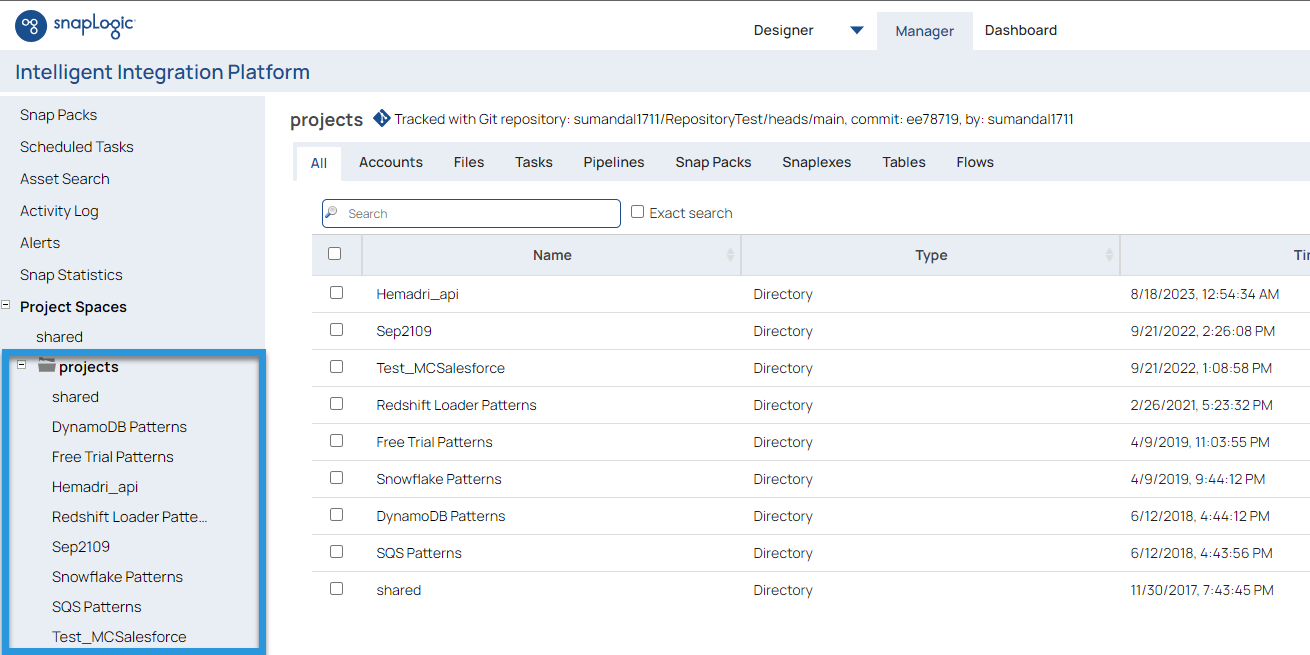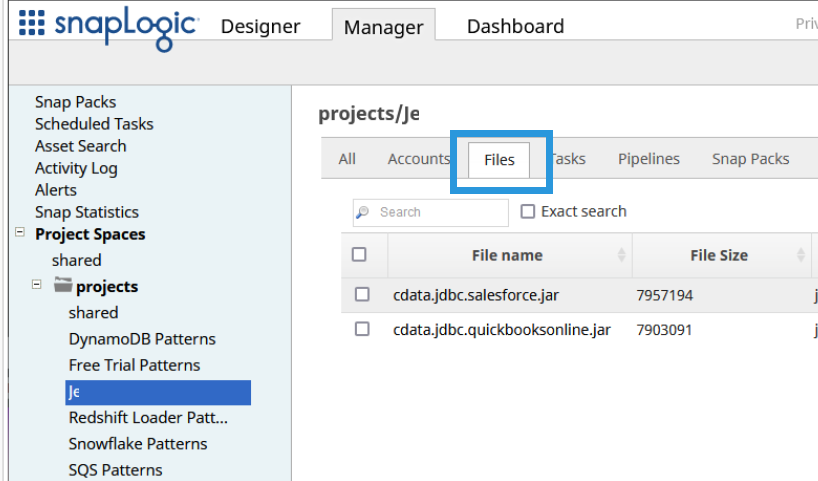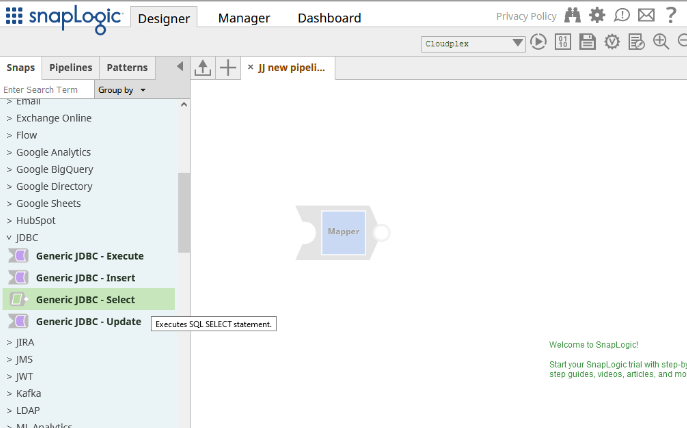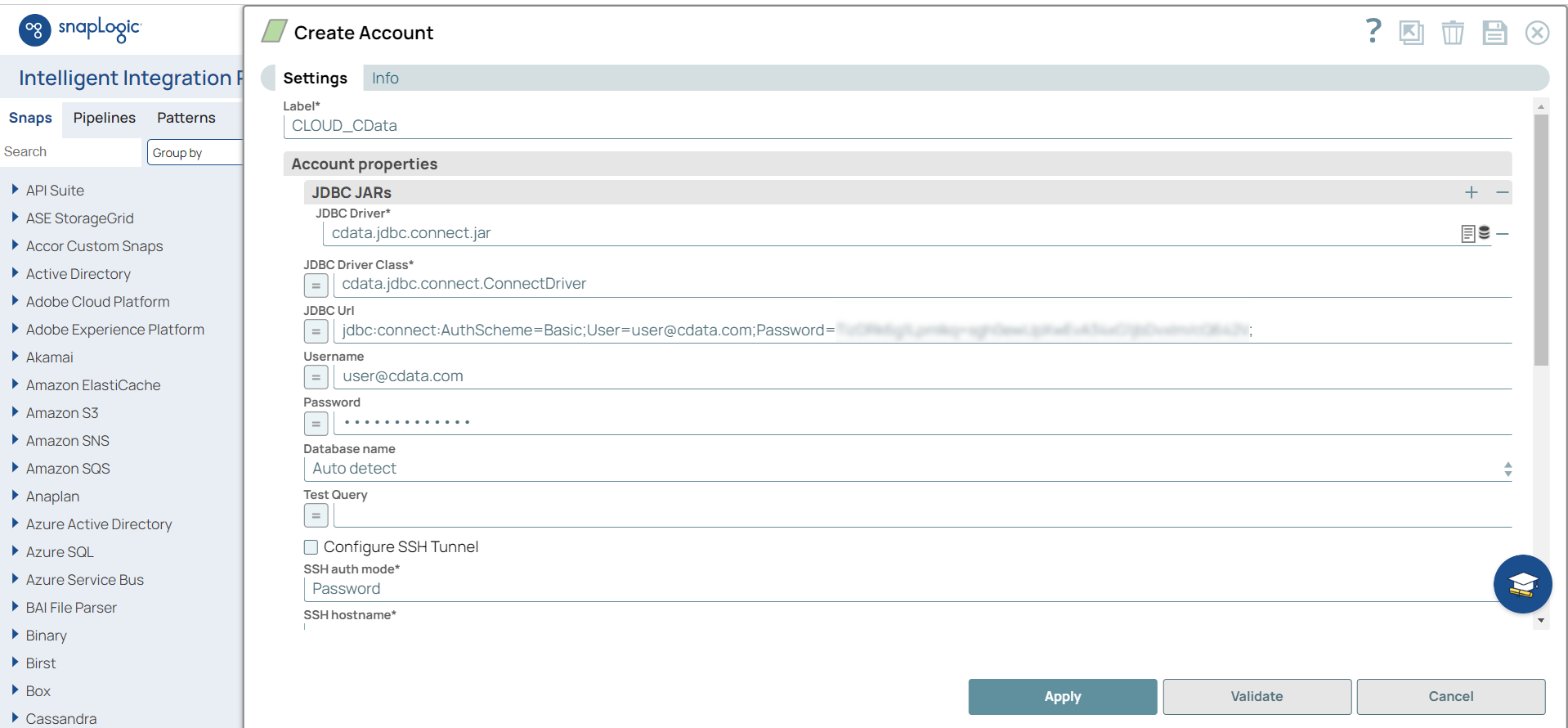Model Context Protocol (MCP) finally gives AI models a way to access the business data needed to make them really useful at work. CData MCP Servers have the depth and performance to make sure AI has access to all of the answers.
Try them now for free →Integrate with MongoDB Data in SnapLogic
Use CData Connect Cloud to connect to and integrate with live MongoDB data in SnapLogic.
SnapLogic's iPaaS platform helps organizations automate application, data and cloud integrations. When paired with CData Connect Cloud, SnapLogic gets access to live MongoDB data. This article demonstrates how to connect to MongoDB using Connect Cloud and integrate with MongoDB data in SnapLogic.
CData Connect Cloud provides a pure SQL Server interface for MongoDB, allowing you to query data from MongoDB without replicating the data to a natively supported database. Using optimized data processing out of the box, CData Connect Cloud pushes all supported SQL operations (filters, JOINs, etc.) directly to MongoDB, leveraging server-side processing to return the requested MongoDB data quickly.
About MongoDB Data Integration
Accessing and integrating live data from MongoDB has never been easier with CData. Customers rely on CData connectivity to:
- Access data from MongoDB 2.6 and above, ensuring broad usability across various MongoDB versions.
- Easily manage unstructured data thanks to flexible NoSQL (learn more here: Leading-Edge Drivers for NoSQL Integration).
- Leverage feature advantages over other NoSQL drivers and realize functional benefits when working with MongoDB data (learn more here: A Feature Comparison of Drivers for NoSQL).
MongoDB's flexibility means that it can be used as a transactional, operational, or analytical database. That means CData customers use our solutions to integrate their business data with MongoDB or integrate their MongoDB data with their data warehouse (or both). Customers also leverage our live connectivity options to analyze and report on MongoDB directly from their preferred tools, like Power BI and Tableau.
For more details on MongoDB use case and how CData enhances your MongoDB experience, check out our blog post: The Top 10 Real-World MongoDB Use Cases You Should Know in 2024.
Getting Started
Configure MongoDB Connectivity for SnapLogic
Connectivity to MongoDB from SnapLogic is made possible through CData Connect Cloud. To work with MongoDB data from SnapLogic, we start by creating and configuring a MongoDB connection.
- Log into Connect Cloud, click Connections and click Add Connection
- Select "MongoDB" from the Add Connection panel
-
Enter the necessary authentication properties to connect to MongoDB.
Set the Server, Database, User, and Password connection properties to connect to MongoDB. To access MongoDB collections as tables you can use automatic schema discovery or write your own schema definitions. Schemas are defined in .rsd files, which have a simple format. You can also execute free-form queries that are not tied to the schema.
![Configuring a connection (Salesforce is shown)]()
- Click Create & Test
-
Navigate to the Permissions tab in the Add MongoDB Connection page and update the User-based permissions.
![Updating permissions]()


Add a Personal Access Token
If you are connecting from a service, application, platform, or framework that does not support OAuth authentication, you can create a Personal Access Token (PAT) to use for authentication. Best practices would dictate that you create a separate PAT for each service, to maintain granularity of access.
- Click on your username at the top right of the Connect Cloud app and click User Profile.
- On the User Profile page, scroll down to the Personal Access Tokens section and click Create PAT.
- Give your PAT a name and click Create.
- The personal access token is only visible at creation, so be sure to copy it and store it securely for future use.

Connect to MongoDB from SnapLogic using Connect Cloud
To establish a connection from SnapLogic to CData Connect Cloud, you will need to download the JDBC Driver.
- Open the Client Tools page of CData Connect Cloud.
- In the Dev Tools section, click JDBC.
- Download and run the setup file.
- When the installation is complete, locate the JDBC Connect JAR file in the JDBC driver's installation directory, for example, C:\Program Files\CData\JDBC Driver for CData Connect\lib.
- Copy the JDBC Connect JAR file (cdata.jdbc.connect.jar).
After copying the JDBC CData Connect JAR file, you will need to paste it into the SnapLogic installation location and configure the connection to Connect Cloud.
- Log into SnapLogic.
- Click the Managers tab.
- Select a folder from the Project Spaces to add the JDBC JAR file to.
![Selecting the hosting folder for the JAR file.]()
- Click the Files tab.
![Navigating to the 'Files' tab.]()
- Click the button in the top right to upload the CData Connect Cloud JDBC JAR file. It appears as a file once uploaded.
![Adding the JDBC Driver JAR]()
- Click the Designer tab.
- Click JDBC to expand the options for "snaps."
- Click and drag a Generic JDBC - Select "snap" onto the designer.
![Using a 'Select' snap.]()
- Click Add Account > Continue.
- Enter the JDBC connection properties.
- JDBC driver: add the CData Connect Cloud JAR file
- JDBC driver Class: enter cdata.jdbc.connect.ConnectDriver
- JDBC Url: enter a JDBC connection string for the JDBC driver. For example: jdbc:connect:AuthScheme=Basic;User={username};Password={PAT};
- Username: enter your CData Connect Cloud username. This is displayed in the top-right corner of the CData Connect Cloud interface. For example, test@cdata.com.
- Password: enter the PAT you generated on the Settings page.
![Configuring the connection to CData Connect Cloud.]()
- Click Validate. If the connection succeeds, the "snap" is ready to use.
- Click Apply.
You can now create reports with the connected data.
Get CData Connect Cloud
To get live data access to 100+ SaaS, Big Data, and NoSQL sources directly from SnapLogic, try CData Connect Cloud today!








